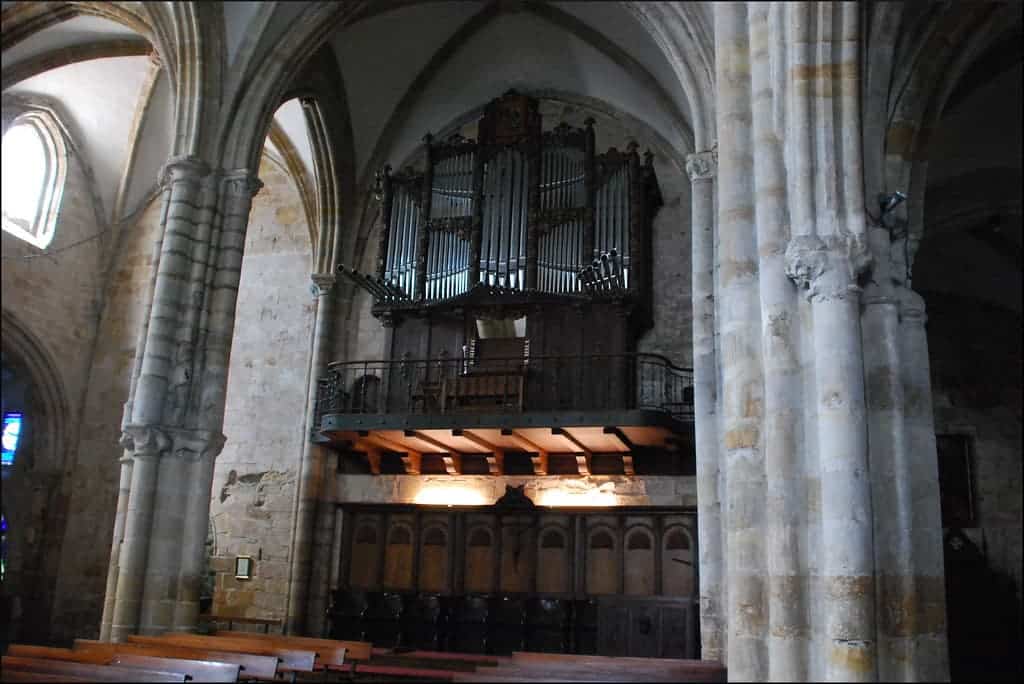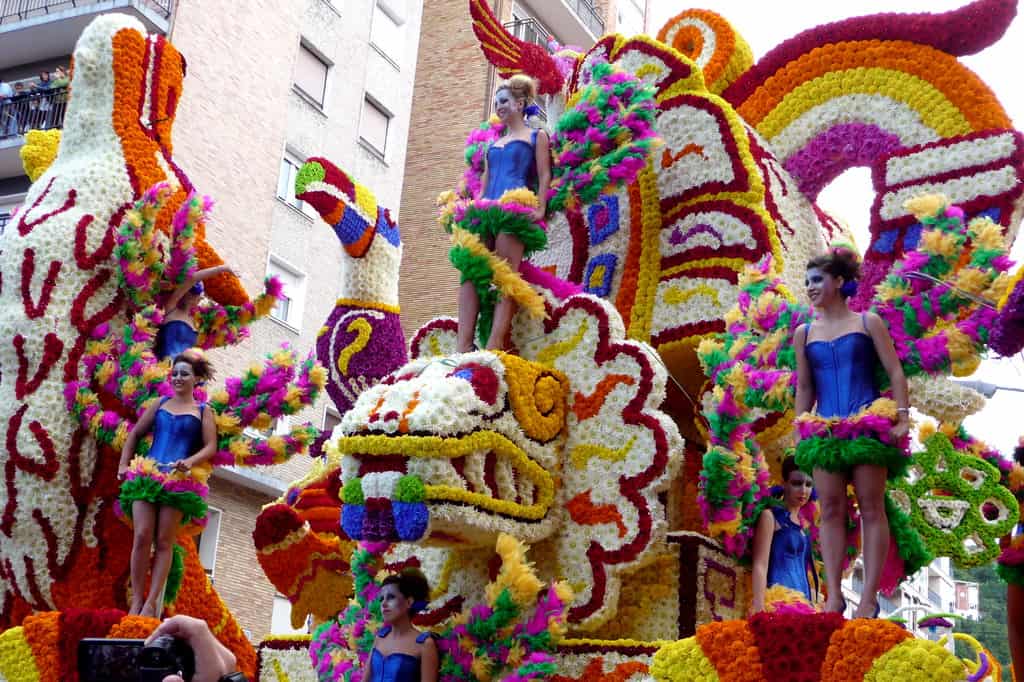
Laredo, located on the Cantabrian coast, is a must-visit town along the Camino del Norte, one of the most iconic routes of the Camino de Santiago. Its location and its history linked to the sea make it a vital stop for pilgrims. Here, tradition and nature combine to offer rest and wonder to those who walk through its streets.
In this guide, you will discover the treasures hidden in Laredo: from its Old Town to its endless beaches and viewpoints overlooking the Cantabrian Sea. You will also learn about the local festivals that bring this seaside town to life.
Stay with Mundiplus, specialists in Camino de Santiago trips, and find out all that this town has to offer before you set out on your adventure.
Índice de contenidos
Why should you choose the Northern Route?
If you are planning your Camino de Santiago, you are likely wondering which route is the most suitable for you. Among the options, the Camino del Norte, Camino Francés, Camino Primitivo, Camino Portugués, and Camino Inglés stand out.
The Camino del Norte is a coastal route that offers breathtaking views of the Cantabrian Sea, a rich history, and the chance to enjoy the maritime culture.
Other routes, such as the Caminho de Santiago from Ourense, are known for their inland landscapes, and others, like the Camino Primitivo from Lugo, have a more mountainous profile. The Camino del Norte, on the other hand, stands out for its gentle sea breezes and its cultural heritage linked to the sea.
The Old Town: A Journey Back in Time
Laredo’s Old Town, declared a Historic-Artistic Ensemble, is one of the best examples of medieval urbanism in Cantabria. Founded in the 13th century, this fortified area was an important commercial and defensive enclave, thanks to its strategic position by the sea.
As you walk through its cobbled streets, you will come across iconic buildings such as: the Casa de Zarauz, an 18th-century noble construction; and the Casa de los Peregrines, which, although in ruins, retains the spirit of its medieval past. Another historical gem is the Convent of San Francisco, currently home to the Trinitarian Sisters, where Gothic elements and a cloister invite contemplation.
The town’s walls, built to protect it from invasions, still preserve several of their original gates, such as the Puerta de San Lorenzo and the Puerta de San Marcial. Both are witnesses to the commercial bustle of past times. The Puerta de la Escala, for its part, directly connected to the port, highlighting the vital relationship between Laredo and the sea.
This journey also includes the Church of San Martín, the oldest church in the town, which shows valuable Romanesque remains. Every corner of the Old Town tells the story of a prosperous medieval Laredo, now a living testament to centuries of tradition and culture.
Iconic Monuments: Church and Viewpoints

The Church of Santa María de la Asunción, located at the top of the Old Town, is an impressive example of Cantabrian Gothic, dating back to the 13th century. This church, considered the mother parish and patron, stands out for its architecture, especially for its four aisles ending in semicircular apses.
Its design makes it one of the most notable Gothic temples in Spain, not only for its structure but also for the richness of its interior. In its altar, you will find the Flemish altarpiece of the Virgin of Bethlehem, a 15th-century sculptural work that stands out for its vibrant colours and details.
Additionally, the church’s main entrance, with a pointed arch and three decorated archivolts, showcases the craftsmanship of the time.
But it is not just the church itself that is an attraction, but also its location, which offers spectacular views of the Cantabrian Sea. From the nearby viewpoints, you can enjoy an impressive panorama of the coastal landscape, while the history of Laredo unfolds before you.
Beaches and Coastline: Natural Beauty
Laredo is known for its beautiful beaches, offering the perfect combination of nature and outdoor activities.
For example, Playa Salvé is the longest beach in Cantabria, stretching over 4,250 metres. It is located at the end of the Asón River estuary, within a bay protected by Monte Buciero, creating calm and safe waters. Its sand is fine, white, and golden, ideal for family enjoyment.
Since 2007, it has held the ISO 14,001 environmental management certification, and since 2008, the “Q for Tourist Quality“, both of which are renewed regularly. It offers multiple access points, including for people with reduced mobility.
The beach provides lifeguard services, police surveillance, cleaning, and public transport. Additionally, it features showers, foot washers, toilets, wooden walkways, recycling points, a summer library, sports and leisure areas, playgrounds, and ice cream and refreshment stalls.
On the other hand, Playa de La Soledad, although small and not frequently used for swimming due to its rocky nature and strong erosion from the waves, offers a peaceful environment and stunning views of the Cantabrian Sea. Its moderate access and steep slope towards the water make it more suitable for enjoying the natural landscape than for intense water activities.
Hiking in Laredo: Natural Trails and Unique Landscapes
Laredo offers several hiking routes ideal for connecting with nature, enjoying the outdoors, and discovering unique corners. Its landscapes, from wetlands to cliffs, combine the beauty of the Cantabrian Sea with an environment of great ecological and historical value.
The Natural Park of the Marshes of Santoña, Victoria and Joyel is an ecological gem on the Cantabrian coast, with more than 6,500 hectares of protected wetlands. It is a perfect place for those who enjoy peaceful hiking and birdwatching. Additionally, you can visit the interpretation centre to learn more about the importance of this ecosystem.
Access to the Faro del Caballo, in Santoña, requires descending more than 700 steps carved into the rock, adding a touch of challenge to the adventure. This route offers breathtaking views of the cliffs and the Cantabrian Sea, and the effort is rewarded with the opportunity to admire this historic lighthouse.
The Mirador de La Atalaya offers exceptional panoramic views of the sea and the urban environment. It is the perfect place for a short walk, ideal for enjoying a spectacular sunset. Moreover, its proximity to the Old Town makes it a must-visit after exploring the town’s historic centre.
Local Culture and Festive Events

The maritime culture of Laredo is intensely experienced in local events that reflect its rich fishing heritage and festive traditions.
The Battle of Flowers is a very colourful and anticipated event. It is held annually and consists of a spectacular parade where participants decorate floats with fresh flowers, creating an attractive and festive atmosphere. The competition between the various participating groups adds an exciting touch to the event.
The maritime festivals are celebrations that honour local fishing traditions, highlighting the historical importance of the sea to the community. During these festivals, activities such as maritime processions, live concerts, and tastings of typical Cantabrian cuisine are organised.
Additionally, tributes are held for local patron saints of seafarers, such as Saint Peter or the Virgin of Carmen. These events are a living expression of cultural identity and an opportunity for visitors and locals to share in the joy and community spirit that characterise this charming town. If you haven’t experienced it yet, this is the ideal time to do so.
Don’t miss the chance to live it firsthand and be part of the magic that makes Laredo an unforgettable place.









